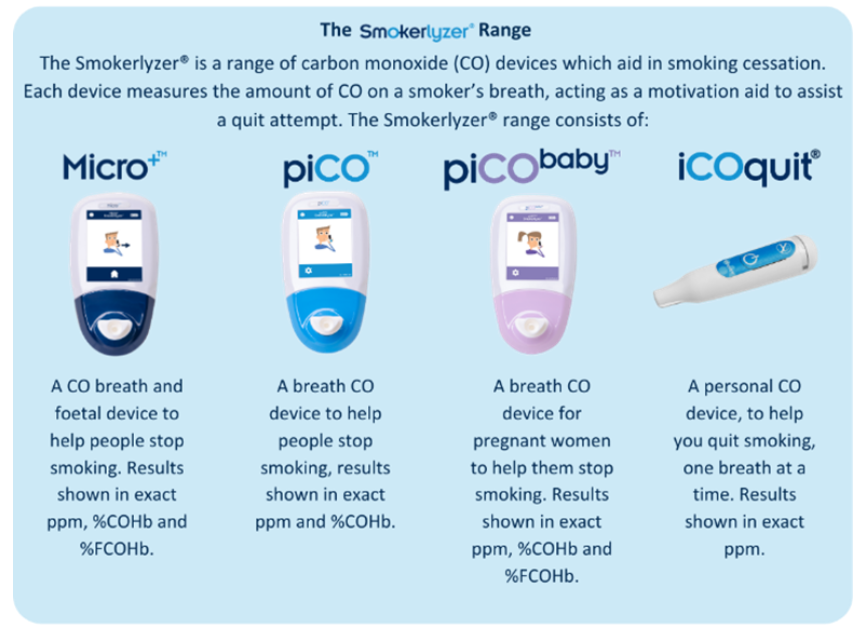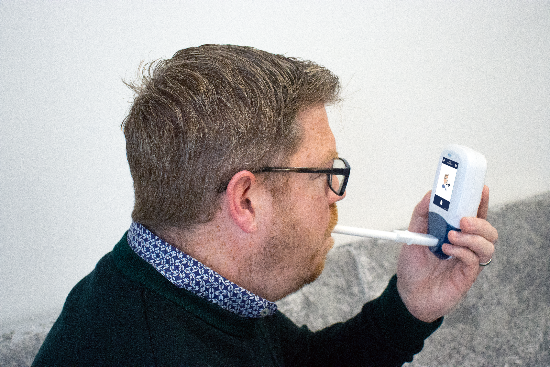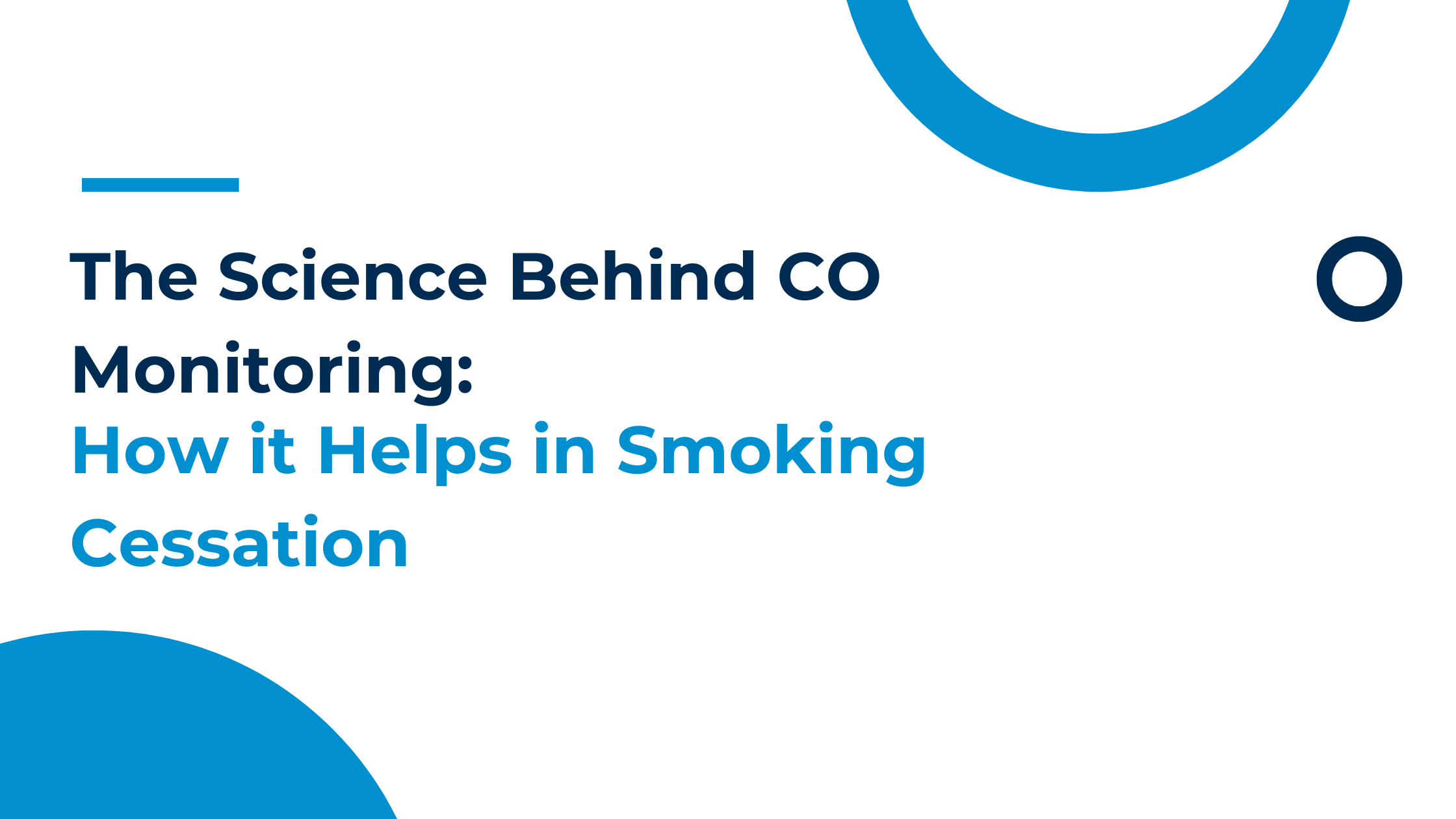Carbon monoxide (CO) is a harmful gas formed through incomplete combustion and is produced when smoking tobacco. Smoking kills over 8 million people a year and is one of the biggest public health threats the world has ever faced1. This includes an estimated 1.3 million non-smokers who are exposed to second-hand smoke1. Smoking has a profound impact on people’s health, affecting nearly every organ of the body and leading to a variety of diseases.

In light of the startling figures mentioned above, this blog examines CO monitoring and how it can help with a quit-smoking attempt.
What is CO, and why is it harmful?
CO is a colourless, odourless gas found in cigarette smoke. When inhaled, it is absorbed into the bloodstream through the lungs. The CO attaches to the haemoglobin in red blood cells and blocks the oxygen they carry, starving your body of oxygen. This can then lead to many health complications and smoking-related diseases2, such as:
- Cancer,
- Breathing and chronic respiratory conditions,
- Heart disease, stroke and blood circulation problems,
- Diabetes,
- And many more serious illnesses.
The consequences of smoking are staggering, with smoking-related deaths remaining the UK’s biggest preventable killer, causing 1 in 4 cancer deaths and 64,000 deaths per year in England3.
How CO monitoring works
CO monitoring is an easy, non-invasive way to track CO levels in exhaled breath. CO is a gas naturally found in a person’s exhaled breath, and it is normal to have a small amount of CO in your breath. However, as smokers inhale CO when smoking, a higher level of CO is exhaled.

Why is CO monitoring useful for smoking cessation?
People embarking on a quit-smoking journey can benefit from using a CO device like the Smokerlyzer® by receiving immediate insights into their smoking-related CO levels. Seeing a decline in CO levels after quitting can be a strong motivator and reinforce a person’s reason for quitting.

A study by Beard and West (2012) on the effectiveness of personal carbon monoxide monitoring found that out of 10 smokers, “7 of the smokers reported that they felt as though the devices had reduced their cigarette consumption… 6 smokers reported a lower nicotine dependency relative to baseline. Over the 6 weeks, there appeared to be a significant decline in the number of cigarettes smoked per day4”.
With smoking killing over 8 million people a year, it is clear that more needs to be done to aid smoking cessation and relieve the burden of smoking-related illnesses on healthcare providers worldwide. CO monitoring is a proven tool to help people with a quit attempt and take control of their health. To learn more about CO monitoring with devices like the Smokerlyzer®, visit the website here.
References
- World Health Organization. [cited on 2/5/24] Available from https://www.who.int/news-room/fact-sheets/detail/tobacco
- Department of Health and Aged Care. Effects of smoking and tobacco [Internet]. Australian Government Department of Health and Aged Care. 2024. Available from: https://www.health.gov.au/topics/smoking-vaping-and-tobacco/about-smoking/effects
- Prime Minister to create ‘smokefree generation’ by ending cigarette sales to those born on or after 1 January 2009 [Internet]. GOV.UK. 2023. [Cited Monday 16th September 2024]. Available from: https://www.gov.uk/government/news/prime-minister-to-create-smokefree-generation-by-ending-cigarette-sales-to-those-born-on-or-after-1-january-2009
- Pilot Study of the Use of Personal Carbon Monoxide Monitoring to Achieve Radical Smoking Reduction. Journal of Smoking Cessation. Emma Beard and Robert West (2012). [cited on 31/5/24] Available from https://web.archive.org/web/20180721211143id_/https://www.cambridge.org/core/services/aop-cambridge-core/content/view/0BAC2289E42E9C31C892D54BF7980237/S1834261212000011a.pdf/div-class-title-pilot-study-of-the-use-of-personal-carbon-monoxide-monitoring-to-achieve-radical-smoking-reduction-div.pdf

